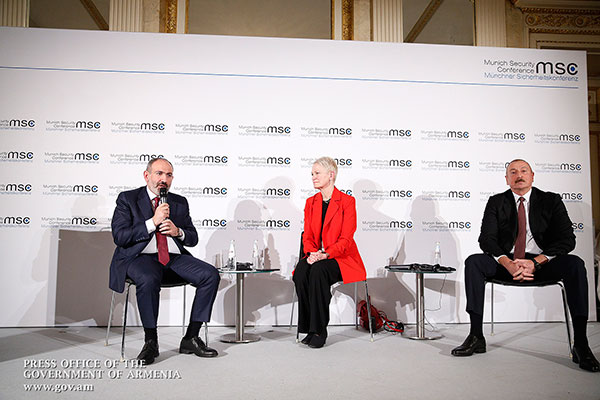The former chair of the Artsakh Parliament Foreign Relations Committee, Vahram Atanesyan, considers it to be monumental that the Nikol Pashinyan-Ilham Aliyev debate took place in February, which is 22 years after Levon Ter-Petrossian resigned.
In an interview with Aravot Daily, Vahram Atanesyan gave a history lesson, speaking about how the mediators presented a suggestion for the Artsakh resolution in 1997, which is known by the “phase” name. The purpose was so that the sides- Artsakh, Azerbaijan, and Armenia- would sign a peace agreement in the initial phase to allow the Artsakh conflict to be resolved in future negotiations. The agreement was supposed to be that the Aghdam (Akna), Fizuli (Varanda), Jebrayil (Jrakan), Zangelan (Kovsakan), Qubadli (Vorotan), and Kelbajar (Karvachar) regions be returned to Azerbaijan. Azerbaijan needed to remove its troops from the former Nagorno-Karabakh Autonomous Republic administrative borders. So, the parts of the Martakert and Martuni regions that were being controlled by Azerbaijan needed to be returned to Armenia.
The issue of internal displacement was based on the principle of parity; if Azeris were returning to Shushi, then Armenians were to return to Shahumyan. The political advantage of this agreement was that Azerbaijan would accept Artsakh’s sovereignty and would sign the agreement with Artsakh as an equal. Azerbaijan was supposed to agree to leave the entire Lachin (Berdzor) region under Armenian control. This would have not only created a separation, but also a buffer zone, which would have remained heavily armed and not suitable for habitation. The size of the buffer zone was to be agreed upon until troops left the region. This suggestion was rejected by the authorities of Artsakh and by three main figures in Armenian politics: Prime Minister Robert Kocharyan, Minister of Defense Vazgen Sargsyan, and Minister of the Interior and National Security Serzh Sargsyan. President Levon Ter-Petrossian resigned.
“Why did the mediators, who frequently call upon us to keep the contents of the negotiations private, organize an open discussion?” Atanesyan said, and he responded to his own question. “It seems like they want to tell Armenians and Azeris that there is no secret process in place. They want to show people the approaches of both leaders and allow people to come to their own conclusions. There is no topic of discussion, nor are there any similar perspectives or approaches. So, the last 22 years have been a waste of time. The sides did not even make half a step towards any mutual goal. There was a goal in 1997 to bring an end to the armed portion of the conflict and reduce tensions, which would create a tolerable atmosphere. This would allow the sides to discuss the Artsakh issue without emotions, and Artsakh would also participate in this discussion. The mediators, through publicizing the Pashinyan-Aliyev debate, seem to be hinting that their opportunities and imaginations are running out.”
Read also
According to Vahram Atanesyan, the sides need to come up with their own suggestions. Aliyev presented his perspective and Prime Minister Pashinyan presented his “Munich principles.” But they are on two different ends of the spectrum and they do not even have any parallels. What remains is for the co-chair nations to keep the situation under control until it becomes possible to establish a new negotiations agenda,” Atanesyan said.
Nelly Grigoryan



















































